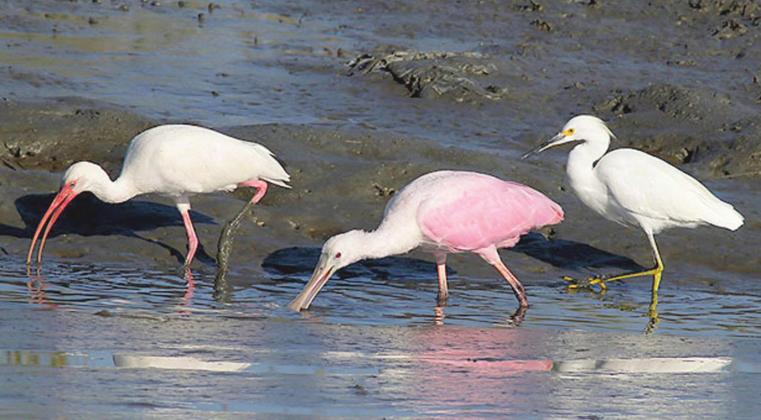Have you seen white, long-beaked birds in your neighborhood? Maybe a pair of tall birds out for a stroll, or a massive grey bird flying overhead? All these birds are considered wading birds. They love shallow water and frequent lakes, ponds, marshes, wetlands, and streams. Most have long legs and toes for wading and long (sometimes curved) beaks for feeding. In addition, their long necks give them a better view of their prey.
Wading birds have a varied diet including fish, insects, amphibians, reptiles, and crustaceans. Their exact diet varies among species, seasons, regions, and habitats. For the most part they are opportunistic feeders – they aren’t too picky and eat what is available.
How can you tell these birds apart? White wading birds with straight beaks are called egrets. They vary in size from 18 inches to three feet tall. A large egret with black legs and feet is a Great Egret. A smaller egret with yellow feet is a Snowy Egret. The smallest of the egrets, a Cattle Egret, often hangs out in flat pastures, following cattle eating insects stirred up by the cows.
If a white wading bird has a curved beak, it is a White Ibis. Its relative the Glossy Ibis is scarcer and has dark, almost black, coloring.
There are many herons in Florida. Most notably the Great Blue Heron is the largest heron in North America, spanning three to five feet long. It has slate blue and grey coloring. In Southern Florida there is a subspecies of the Great Blue Heron that is all white, fittingly named the Great White Heron. Other herons include the Little Blue Heron, Green Heron, and Tri-colored Heron.
Although there are several other wading birds in Florida, two additional fan-favorites are the Sandhill Crane and Roseate Spoonbill. Sandhill Cranes are tall and grey with a red face. They mate for life, so they’re often seen as a pair, sometimes with a few young following behind. The Roseate Spoonbill is one of the most interesting looking species of wading birds. It has pink feathers and a flat, spoon-shaped bill. Roseate spoonbills have a strange way of walking, moving forward slowly as they swing their heads side to side.
Wading birds are a joy to watch and provide beauty to our wetlands, lakes, and ponds. By protecting our natural wetlands, we can make sure wading birds have the habitat they need to survive.




